Lagom P100 Coffee Grinder Review
(updated )
The Kinu M47 Classic hand grinder that I got last year has served me well and I’ve made many delicious coffees with it. However, I did not expect that I would get an espresso machine (the Lelit Mara X) soon after the M47. I also severely underestimated how painful it is to use a hand grinder to grind coffee for espresso.
Hence, I started seriously considering an upgrade to an electric grinder. Here’s how I selected the Lagom P100 as my endgame grinder of choice and my review after two months of use.
Table of Contents
- Grinder Selection
- Ordering The Lagom P100
- Unboxing And First Impressions
- Espresso
- Filter
- Auto-purging And Retention
- Price
- Conclusion
Grinder Selection
I wanted an electric grinder with the following features:
- Included portafilter fork: One of the main problems I wanted to solve was to streamline my espresso workflow. A portafilter fork allows grinding straight into the portafilter and avoids the need to transfer coffee from a separate catch cup into the portafilter, which I had to do otherwise. This saves time and reduces manipulation of grinds.
- Single dosing: a single dosing grinder doesn’t have a hopper which stores a large quantity of beans (which makes sense in a commercial setting). Instead, the exact amount of beans needed for a single dose can be directly fed into a grinder designed for this purpose. This makes it convenient to switch between beans. Single dose grinders also need to have low retention. Some coffee will always be left behind in the grinder after being ground. A low retention grinder keeps this to a minimum (well below 1 g). This is important as the leftover coffee grinds will stale and affect the taste of the next drink. It also eliminates many steps in the coffee preparation workflow like the need to purge the grinder when switching beans, using bellows to get trapped coffee out or using the Ross Droplet Technique (RDT).
- Versatility: although I primarily drink espresso beverages, I do brew the Occasional V60. Hence, I wanted a grinder that makes it easy to switch coffee preparation methods and would perform well for both espresso and filter coffee. Having low retention is important here to make it easier to switch grind sizes.
- Large flat burrs: flat burr grinders produce less fines than those with conical burrs. This increases clarity and transparency to get the most from lightly roasted coffees, which is what I drink exclusively.
- Alignment: I wanted a grinder that comes with well-aligned burrs from the factory. Alignment is important for grind quality. I was looking for something I could use out of the box as manually aligning the burrs can be a time-consuming process.
- Small footprint: space on the kitchen counter is very limited.
Ordering The Lagom P100
I didn’t intend to get the Lagom P100 at first.
I had initially settled on the Lagom P64, the P100’s little brother. The P64 has favorable reviews, ticks all my boxes and is much more reasonably priced than the P100.
I placed a preorder at the end of June for the Sep 2021 batch of P64s.
However, I started having second thoughts. I knew myself well enough to know that I would eventually want to upgrade to an endgame grinder with larger burrs. Larger burrs grind coffee more quickly and uniformly which improves taste. Stepping up from the P64 (64 mm burrs) to a grinder with 98 mm burrs (the largest size available for home use) would only be a marginal increase taste wise in the order of 10 - 15%. There are many endgame grinders I could choose from but the P100 stood out due to its price point, ease of use and workflow.
After much deliberation, I decided on getting the P100 instead of the P64. Coffee is a hobby I’ll be in for the long haul, so this is a long-term investment that I could justify. I am expecting to get at least a decade of use from this grinder.
I changed my order just in time for the Sep 2021 batch of P100s. I received it about 7 weeks later - those were possibly the longest weeks I’ve experienced in recent memory due to the anticipation and multiple unexpected delays. I understand Option-o is working to improve availability of the P100s for early next year.
Burr Selection
The P100 comes with high uniformity (HU) burrs from SSP by default. Option-o offers 2 other sets of burrs that can be used instead when ordering the P100: the low uniformity (LU) or brew burrs.
The choice of burrs depends on how coffee is being prepared and the preferred taste profile. I got the P100 with LU burrs as I intend to use it for both espresso and filter.
Unboxing And First Impressions
The P100 comes in a plastic crate with generous foam padding to protect it from the perils of shipping.
Lifting the P100 from its crate is awkward due to how its weight is distributed so it was harder than I expected to transfer its 14.8 kg bulk to my kitchen counter. It has a small but tall footprint, measuring 15 x 23 x 39.5 cm (w x d x h). It came fully assembled so the only thing I had to do before turning it on was to attach the power chord. An appropriate power chord is provided based on location.


The anodized aluminum is solid and feels very well built.
Unfortunately, there was a noticeably unpleasant smell coming from the grinder akin to burnt rubber or plastic. The smell came from the protective foam the P100 shipped with. It did fade completely after a few weeks, so this is not an issue in practice.

I wished the P100 came with a cover for the bean intake to prevent dust or other unwanted material from getting into the P100. Fortunately, the dosing cup when placed upside down happens to fit perfectly over the bean intake, so I use it as a makeshift cover. Speaking of the dosing cup, it works just fine for holding beans but feels cheap and flimsy compared to the P100 and the other accessories.
Before doing anything else, I seasoned the burrs for a more uniform grind size distribution by running 4 kg of beans through the P100.
During the process of seasoning the burrs, I noticed that the P100 sounds pleasing to the ear when it runs. It isn’t too loud and doesn’t sound annoying, for lack of a better word. This is something that makes more sense if you’ve heard other grinders in action.
Espresso
One of the first things I noticed when making espresso was the design of the portafilter fork. The portafilter sits on both prongs but is not otherwise secured in place and prevented from vibrating right off. This has occasionally been a problem because it tends to vibrate to the left. When I’m not paying much attention (especially first thing in the morning) when putting the portafilter onto the fork, I’ve had it vibrate right off the fork when grinding coffee, causing a mess. This is something I’ve learned to be more careful with.
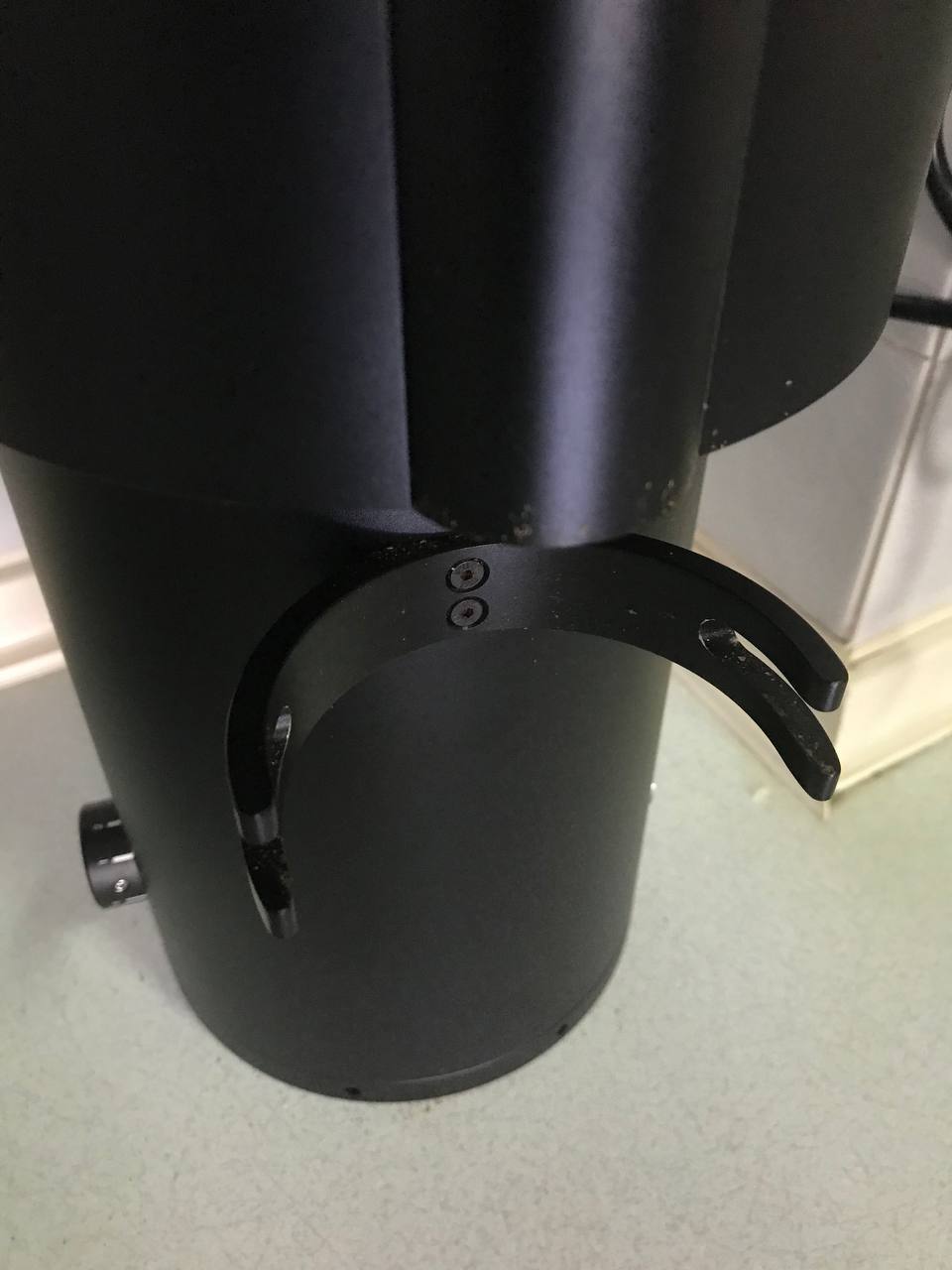
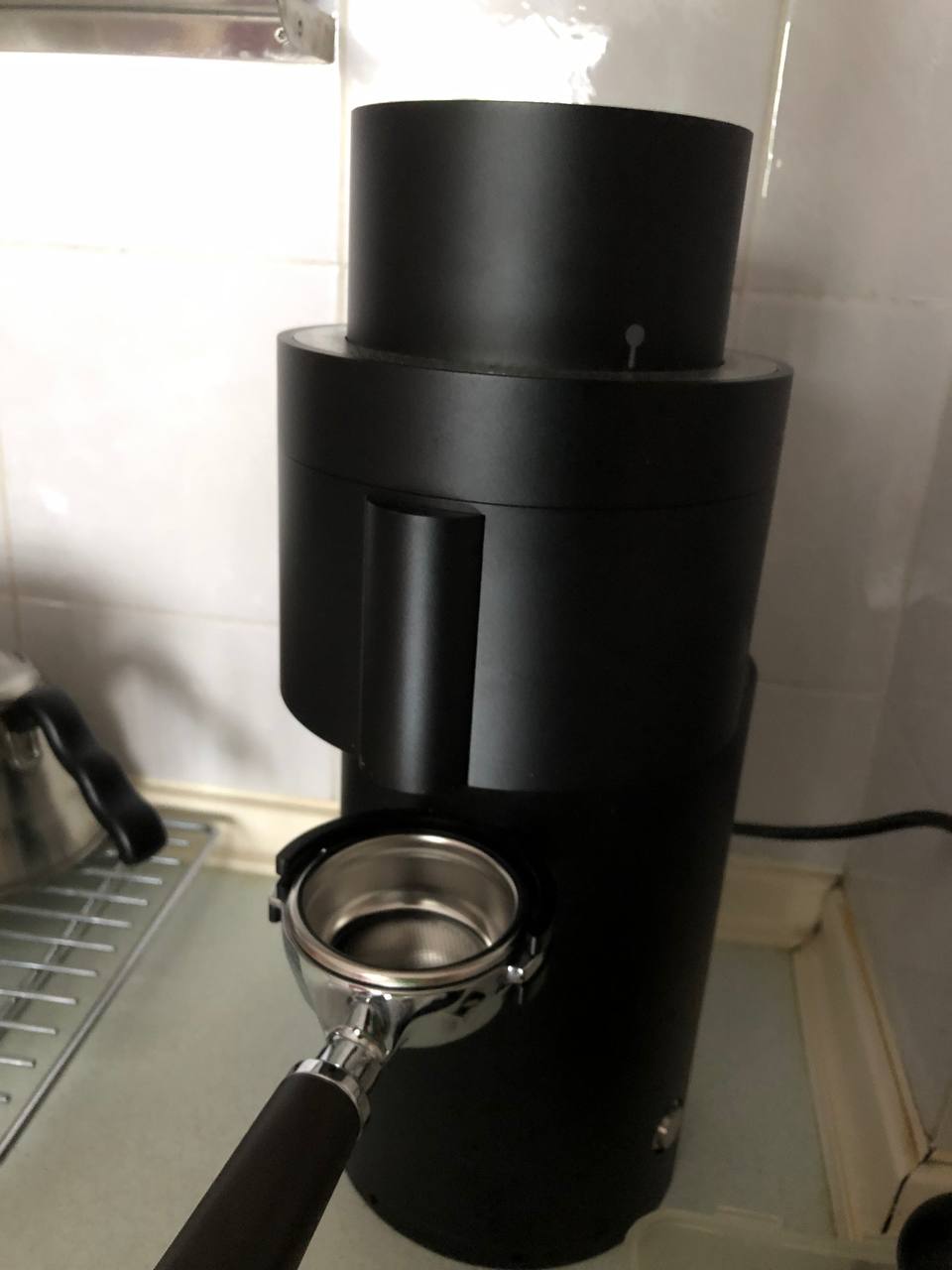
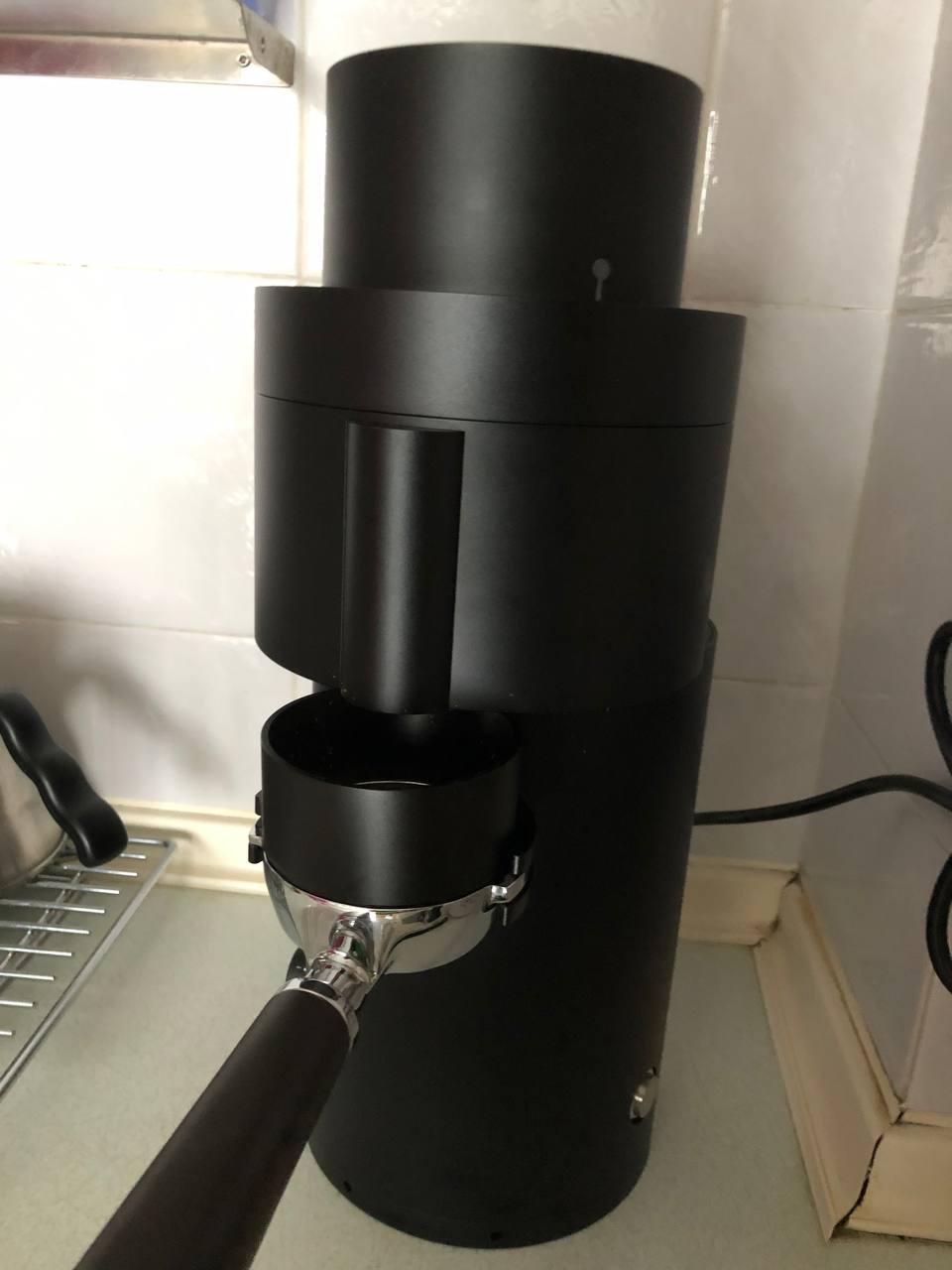
The P100 is a very fast grinder. An 18 g dose for espresso gets ground in 7 s at speed 4. The speed of the P100’s motor can be adjusted from setting 1 (200 RPM) to 9 (1700 RPM). This time is reduced if using a higher speed setting, but I have not yet experimented with speed as a variable.
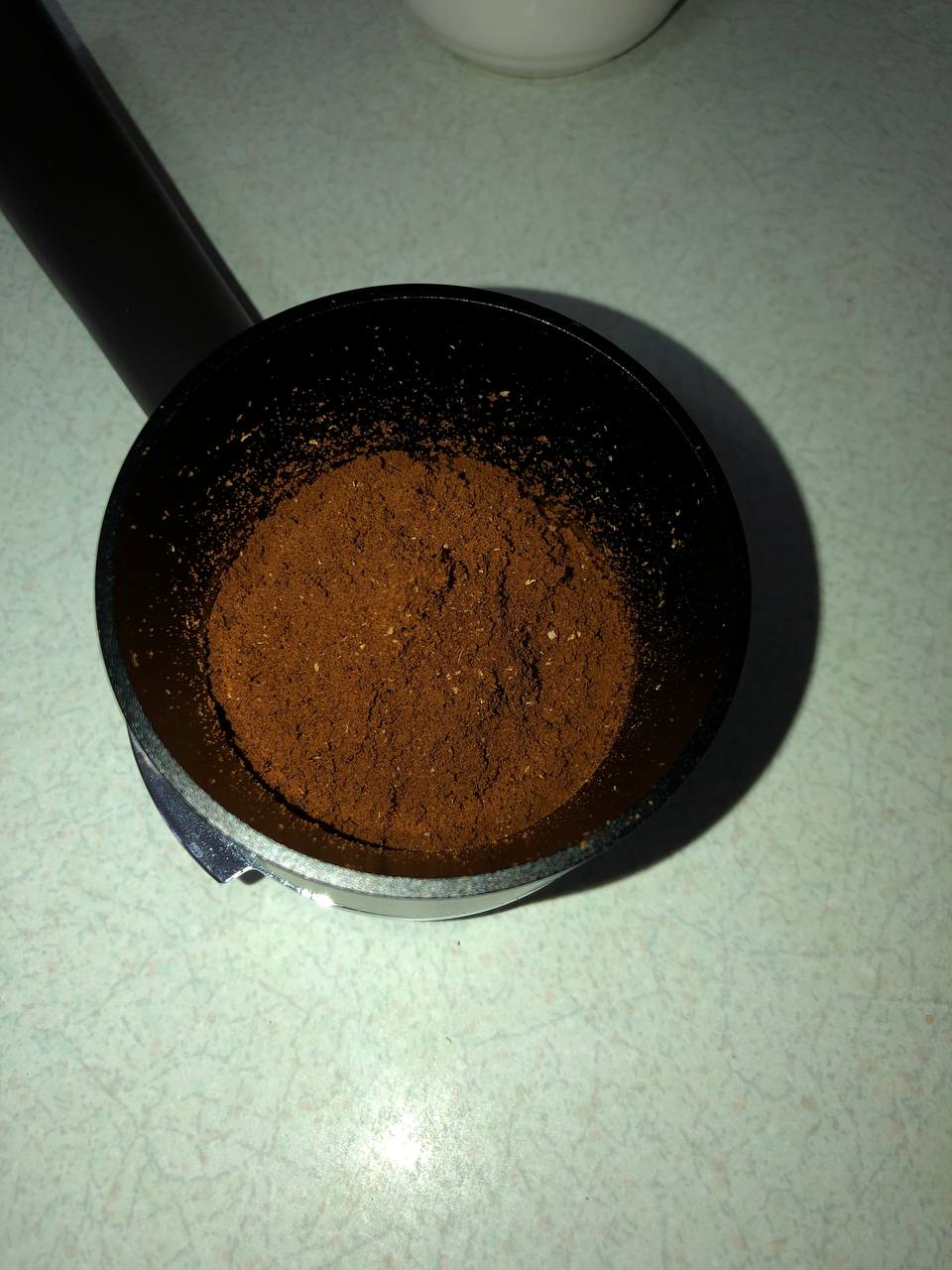
Ground coffee from the P100 is consistent and fluffy. Puck preparation is required for best results because of how the P100 dispenses ground coffee, forming a mound at the center which needs to be distributed evenly. I’ve not needed to RDT. My puck preparation routine consists of distributing the grounds with the included WDT tool, a gentle tap to settle the grounds and tamping with the V4 Decent Tamper.
I had some trouble at first with espresso from the P100. When using the M47, my shot times were usually in the range of 26 - 30 s for a traditional 1:2 shot with an 18 g dose, well within parameters for a traditional espresso. With the P100, such a pull would finish much faster in about 20 s. I knew that a flat burr grinder like the P100 would produce much less fines, so water would have a much easier time flowing through the puck as fines slow down the shot.
I tried a few things to increase shot times:
- Adjusting the overpressure valve on my espresso machine to reduce pump pressure from 10 bars (factory default) to 6.5 bars.
- Grinding much finer (setting 0.5).
- Swapping out my VST portafilter basket for the stock one that came with my machine. VST baskets are less forgiving and tend to flow quickly.
That worked to an extent to slow down my shots. At the same time, I was also talking to other P100 users to see if this is a common problem. I learned that the P100 is a fast-flowing grinder, meaning that shots will naturally flow more quickly to what I’m used to, so 20 - 22 s shots are not out of the norm for the P100.
In my experiments, I’ve also found that increasing my ratio to 1:2.5 or 1:3 gave me incredibly tasty results with light roasts. I’ve also really enjoyed pulling turbo shots, 1:3 shots that finish in less than 20 s. In summary, fast shots with the P100 is just something to get used to when coming from other grinders.
The M47 uses conical burrs, so the espresso that it produces has high body and mouth feel. Being a flat burred grinder, the P100 produces a very different unimodal style of espresso: one that has amazing flavor clarity but with less body and mouth feel. Espresso from the P100 with LU burrs tastes closer to a concentrated filter than a traditional espresso. One style of espresso isn’t better than another, it is a matter of taste and the type of beans being used.
I only use lightly roasted beans, so I love how the higher flavor clarity from the P100 makes it easy to taste unique bean characteristics. This is something that is much less apparent with my M47. Light roasts also work very well with the higher ratios that I’ve been using.
I almost never need to adjust grind size to dial in for different beans. I usually leave the P100 set to somewhere between 0.5 and 1.0, depending on the recipe that I’m aiming for. Dialing in for different beans was something I had to do much more often previously.
I’m also getting very consistent results with the P100, meaning that shots taste delicious much more often with less variation between shots. I’ve also not encountered instances of undrinkable shots - shots that taste too bad to drink due to an incorrect grind size or recipe. The P100 is forgiving in this respect.
I don’t know how much of the improvement in consistency should be attributed to the p100 or the LU burrs. I suspect that my improving puck preparation skills is the larger contributing factor.
Filter
Switching from espresso to filter grind size is easy, save for the need to purge espresso grounds with a few beans (see the next section).
I use a grind size setting of around 8 for brews. At filter settings, the P100 chews through beans extremely quickly, getting through a 20 g dose in 4 seconds.
I don’t do filters as often, so I don’t have that much to say here. The brews have been sweet, blended, and juicy, showcasing the characteristics of each bean. The brews have a tea-like quality which I really enjoy.
The included catch cup works well to hold ground coffee when not making espresso. It sits on top of the portafilter fork and unlike a portafilter, will not vibrate off the fork.
Auto-purging And Retention
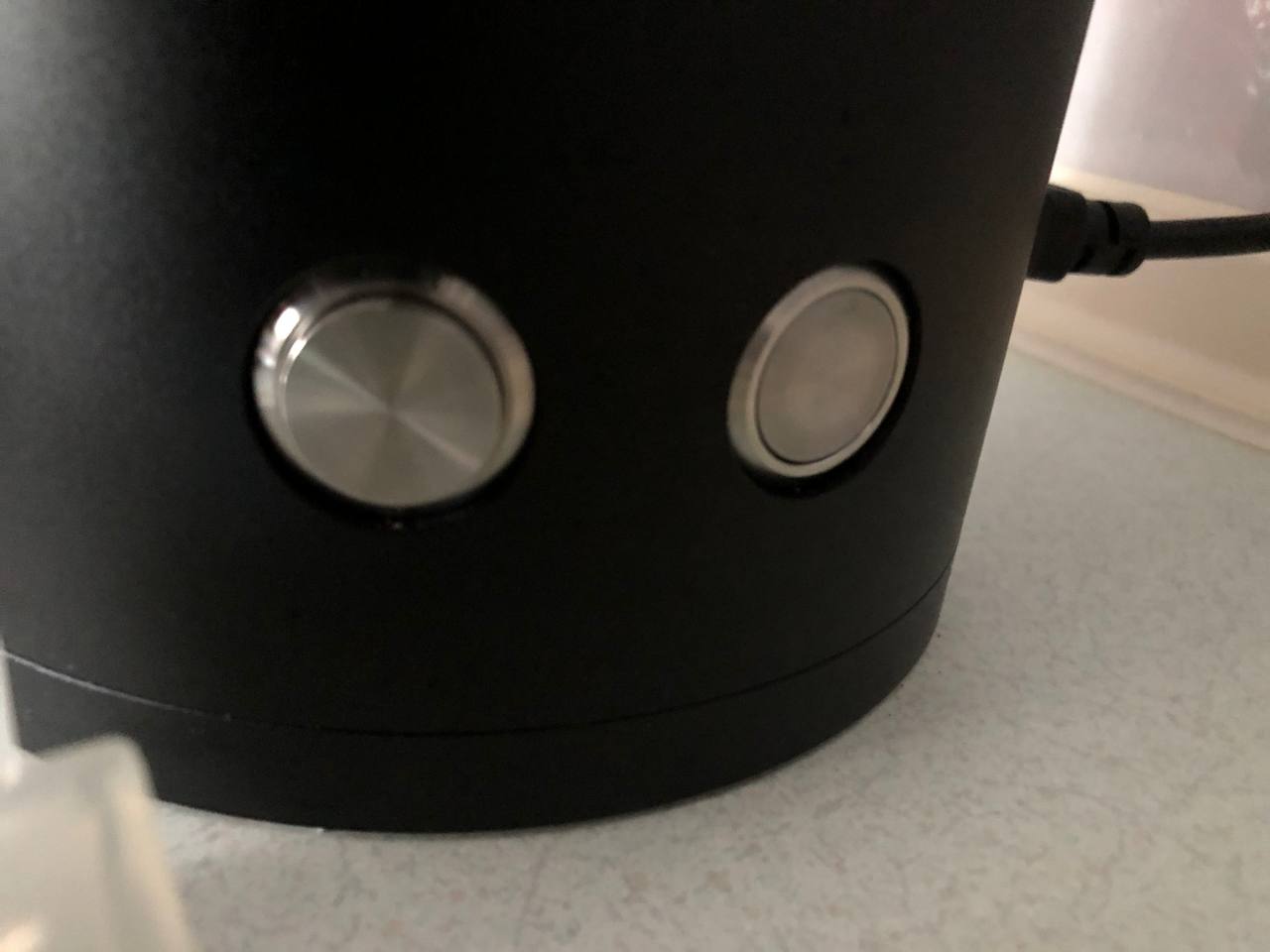
The P100 can operate in manual or automatic mode.
- In automatic mode, once the P100 detects that there are no more beans left to be ground, it automatically switches to a purging phase, ramping up the motor for a few seconds to increase the speed of the burrs to evacuate any leftover coffee from the grind chamber. Once done, the P100 turns itself off. At lower speed settings or when grinding more finely, this purging phase lasts longer to ensure that all grounds are evacuated. This works very well in practice. It saves me the extra step of turning off the grinder which I appreciate a lot, even if it sounds like a small thing.
- In manual mode, pressing the button once switches on the grinder and pressing it a second time switches it off. The P100 stays on until you turn it off manually. I’d only used this mode when seasoning the burrs or grinding a batch of beans for someone else.
The P100 also has a spring-loaded mechanism to eject leftover grinds in the exit chute after grinding.
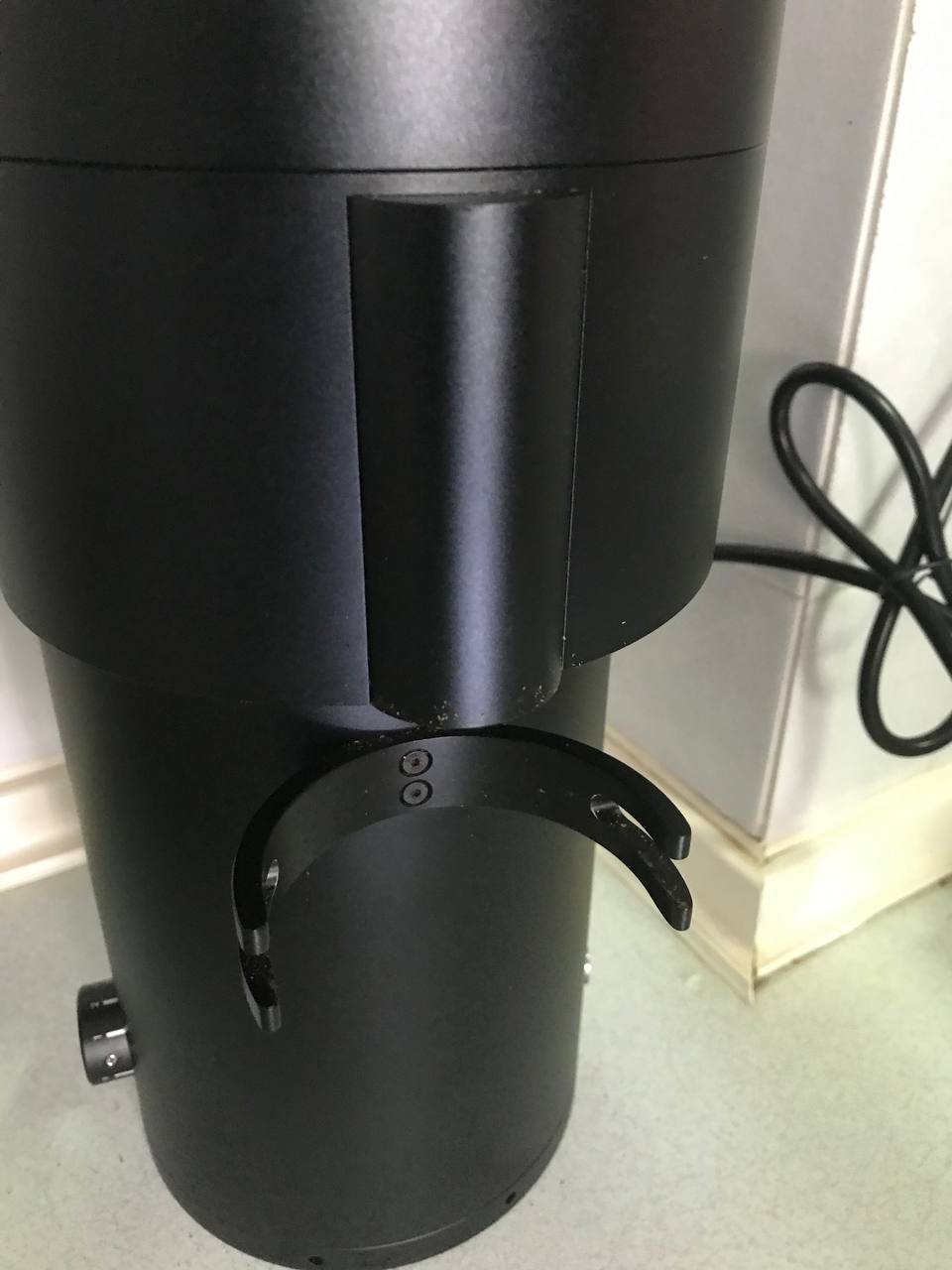
With auto purging and this spring-loaded mechanism, retention is extremely low as advertised. Even without RDT, grinding 18.0 g of beans results in 18.0 g of ground coffee. The only exception to this is when switching from espresso to filter grind size. The first dose of coffee ground after this grind size change will have an extra 0.4 g more ground coffee coming out of the P100. At espresso settings, there is some ground coffee which remains in the P100 which doesn’t get dislodged and otherwise interfere with subsequent shots. However, the switch to filter grind size dislodges this residual grounds. Using a few beans right after a switch from espresso to filter settings to purge this coffee solves this problem.
Price
The P100 costs US$2650 direct from Option-O, not including customization, shipping, and import duties.
This is a lot of money for a coffee grinder. However, the P100 is cheaper than most other endgame grinders. For instance, prices excluding shipping and customizations are US$2970 for the Versalab M4, US$3250 for the Monolith Flat MAX and US$3495 for the EG1.
Conclusion
I started looking for an electric grinder to simplify my espresso workflow. I found it frustrating to grind coffee by hand and to dial in for each new coffee.
The P100 is not for everyone, nor is it perfect. It is far past the point of diminishing returns. Its aesthetics don’t appeal to some, and it won’t be the best choice if you prefer a more traditional high bodied espresso.
For the past 2 months, it has enabled me to make consistently amazing coffee. I find it easy to use, works great for both espresso and filter and has a compact footprint. After getting used to the P100’s quirks and settling into the new workflow, I’ve found that there is nothing major that I would want to change. In other words, using the P100 does not make me think about wanting an upgrade, which is perhaps the highest praise that I can give.
If you’re looking for an endgame grinder with an easy workflow and to get the most out of lightly roasted coffees, the P100 has my highest recommendation.